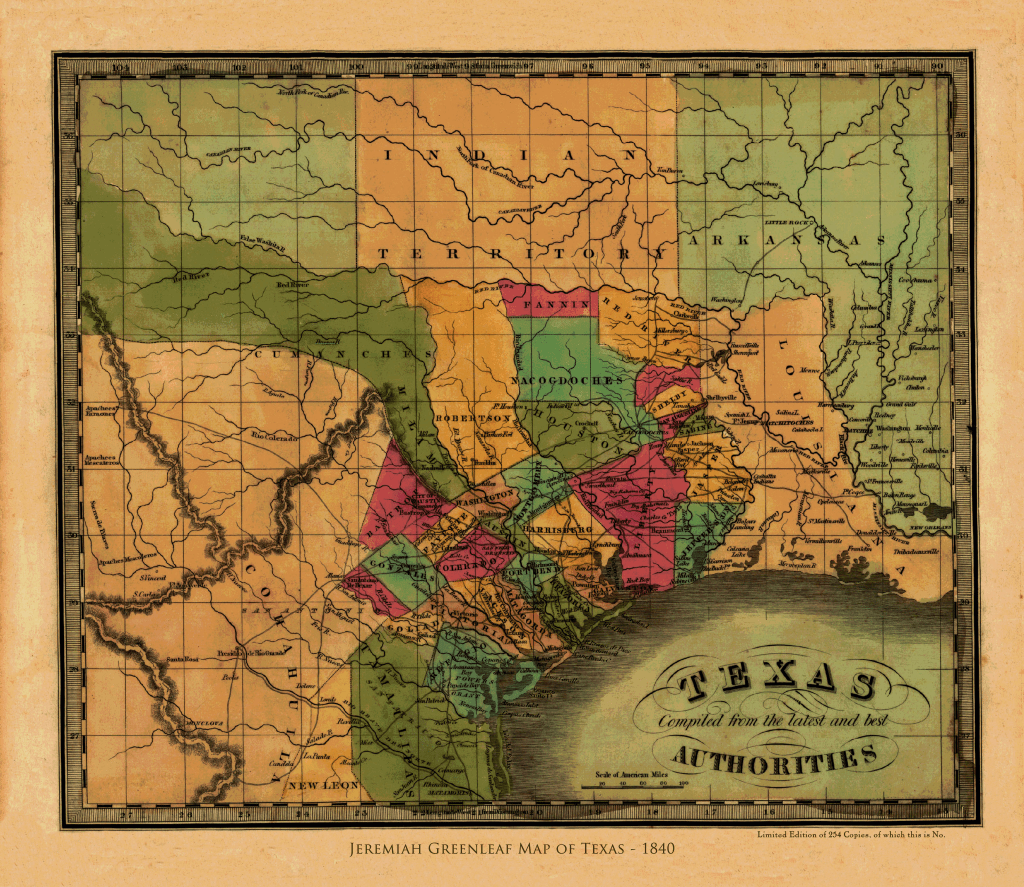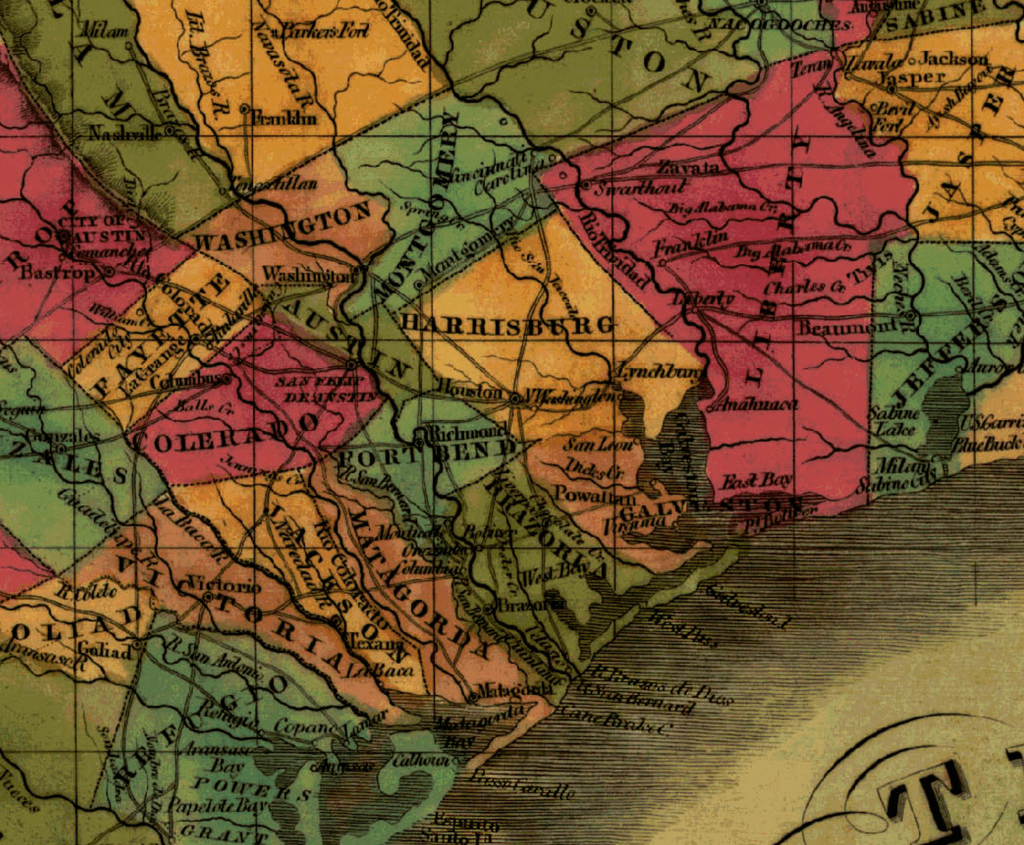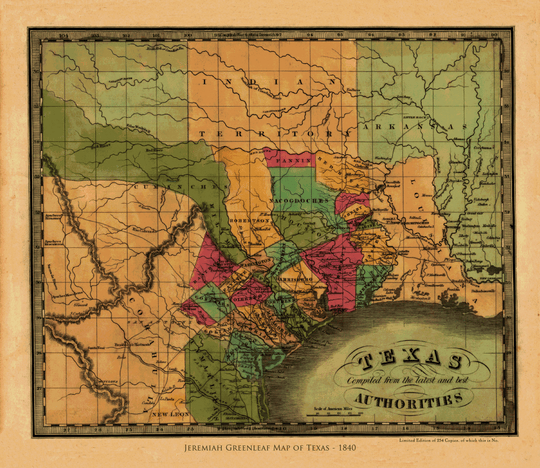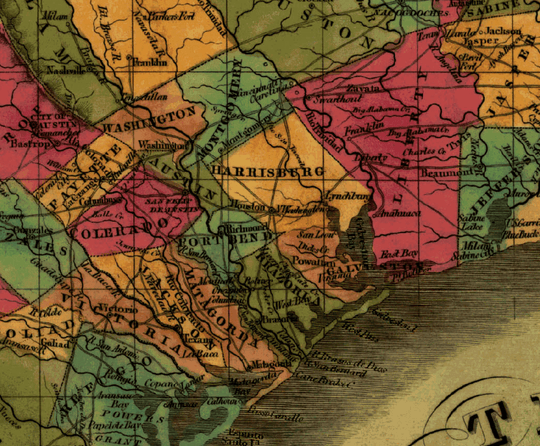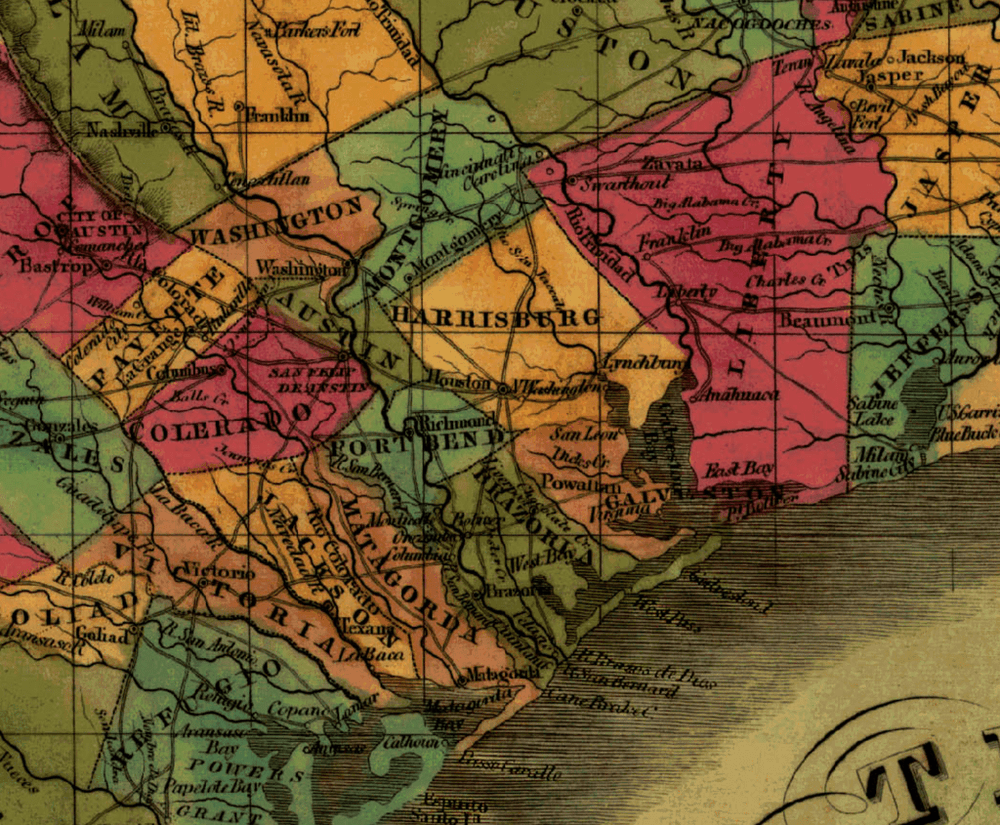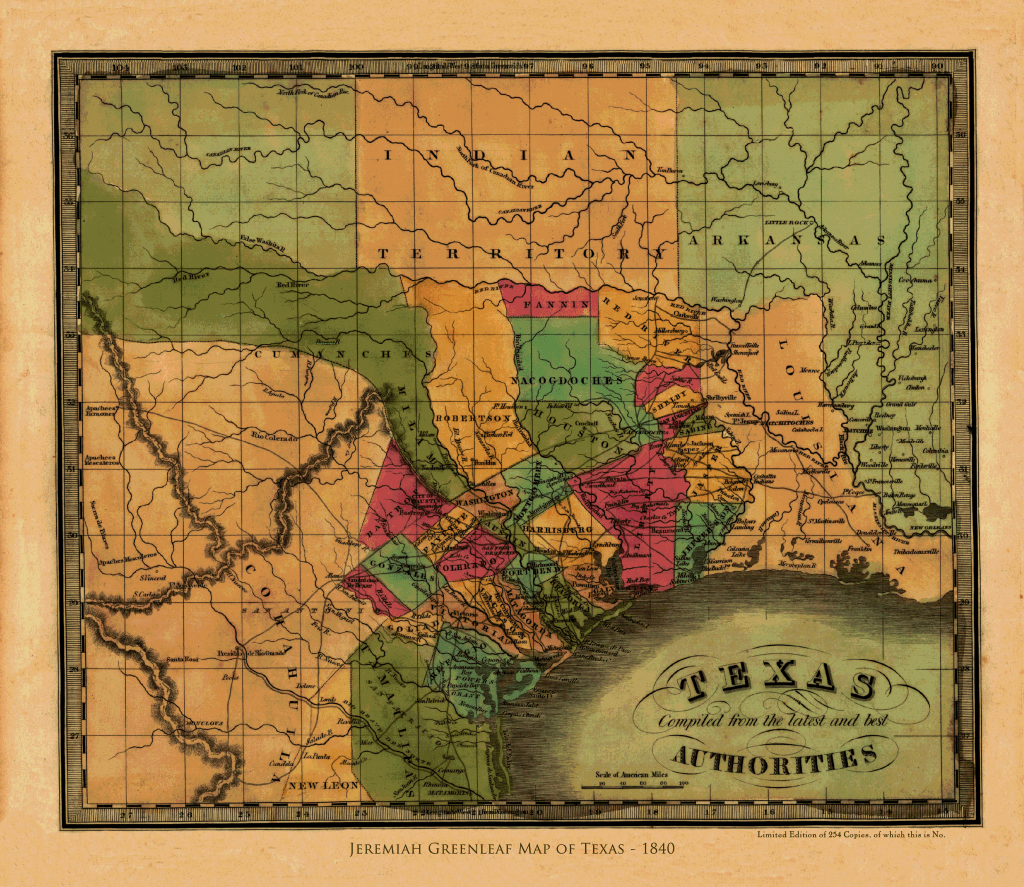Greenleaf's Map of the Republic of Texas - 1840
Regular price79.95
/
The 'Land of Milk and Honey' Map
Have you ever thought about that expression, 'The Land of Milk and Honey?'
What does it really mean? Most people will say, 'the promised land,' or 'a land of abundance,' but let's go deeper than that.
Milk we get from domesticated cattle. Obvious, right? And most people know there were none here before the Europeans came.
What about honey? You may not know that honey bees are not native to the Americas. They arrived on the Eastern seaboard with English settlers in the 1600s. The bees were actually better colonizers than the English, always being about fifty miles ahead of white settlement.
So the 'Land of Milk and Honey,' was not an unspoiled wilderness. It was a tamed land. Civilization. Terra domesticus.
That is what Jeremiah Greenleaf's 1840 Map of Texas shows: the tamed land, that 'Land of Milk and Honey,' (the thirty oldest counties) and the wilds beyond.
Milk we get from domesticated cattle. Obvious, right? And most people know there were none here before the Europeans came.
What about honey? You may not know that honey bees are not native to the Americas. They arrived on the Eastern seaboard with English settlers in the 1600s. The bees were actually better colonizers than the English, always being about fifty miles ahead of white settlement.
So the 'Land of Milk and Honey,' was not an unspoiled wilderness. It was a tamed land. Civilization. Terra domesticus.
That is what Jeremiah Greenleaf's 1840 Map of Texas shows: the tamed land, that 'Land of Milk and Honey,' (the thirty oldest counties) and the wilds beyond.
The Mysterious Mr. Greenleaf
In the world of map collecting, cartographers are celebrated like rock stars, so it's rare that one of them has not been thoroughly researched.
Jeremiah Greenleaf is that rare bird. Little is known about him in cartography circles. He arrives on the scene as a publisher of maps and atlases about 1830 and after 1848 we hear no more of him. A few things are certain though: his works are stunning, in high demand and expensive.
We decided to dig around in some non-cartographic sources and were able to learn that he was born in Brattleboro, Vermont in 1791. He fought in the War of 1812 and was married to his cousin.
Besides being a cartographer, he was the author of a number works on English grammar. In Vermont this made him something of a celebrity. It's hard to understand New Englanders.
But it's easy to understand why collectors love Greenleaf's 1840 Map of Texas. It is a tour-de-force of line and color.
It is one of the first maps to delineate the individual counties, showing the thirty earliest. Texas was eventually divided into 254 counties in order to make this vast area manageable.
And that is the number of copies in this limited edition: 254.
Jeremiah Greenleaf is that rare bird. Little is known about him in cartography circles. He arrives on the scene as a publisher of maps and atlases about 1830 and after 1848 we hear no more of him. A few things are certain though: his works are stunning, in high demand and expensive.
We decided to dig around in some non-cartographic sources and were able to learn that he was born in Brattleboro, Vermont in 1791. He fought in the War of 1812 and was married to his cousin.
Besides being a cartographer, he was the author of a number works on English grammar. In Vermont this made him something of a celebrity. It's hard to understand New Englanders.
But it's easy to understand why collectors love Greenleaf's 1840 Map of Texas. It is a tour-de-force of line and color.
It is one of the first maps to delineate the individual counties, showing the thirty earliest. Texas was eventually divided into 254 counties in order to make this vast area manageable.
And that is the number of copies in this limited edition: 254.
Physical Details
It's a high quality fine-art reproduction:
- Limited edition of just 254 copies
- 27 by 24 inches
- Each one hand-numbered
The paper is acid free, cold press cotton watercolor with an elegant ever so lightly textured finish. This surface allows the inks to 'bite', reproducing the shading and tonality of the original map vividly, beautifully, and exactly.
The inks are guaranteed color-fast for 80 years, which means you won't need to lay out the extra money for UV glass. You can hang your map in direct sun and it will be just as bright when they are passed on to the next generation it is the day it ships.
It's an instant heirloom. Get yours before they're gone...and get one to give to a friend. He'll owe you!


